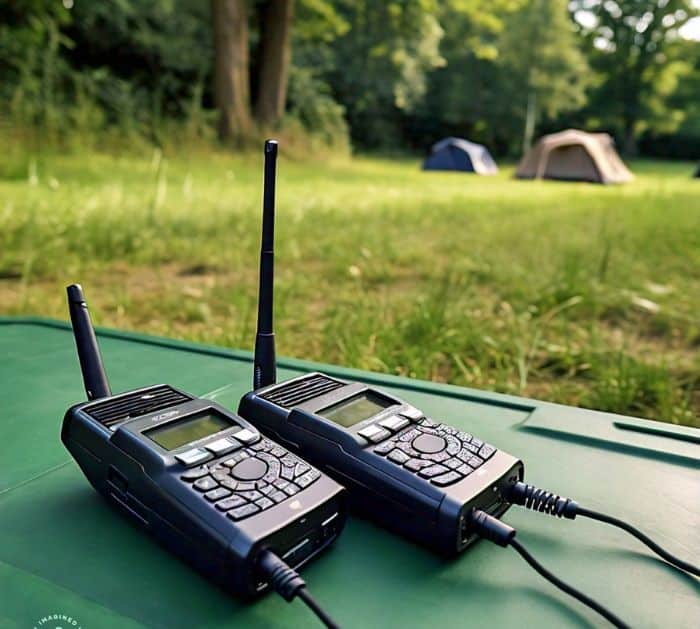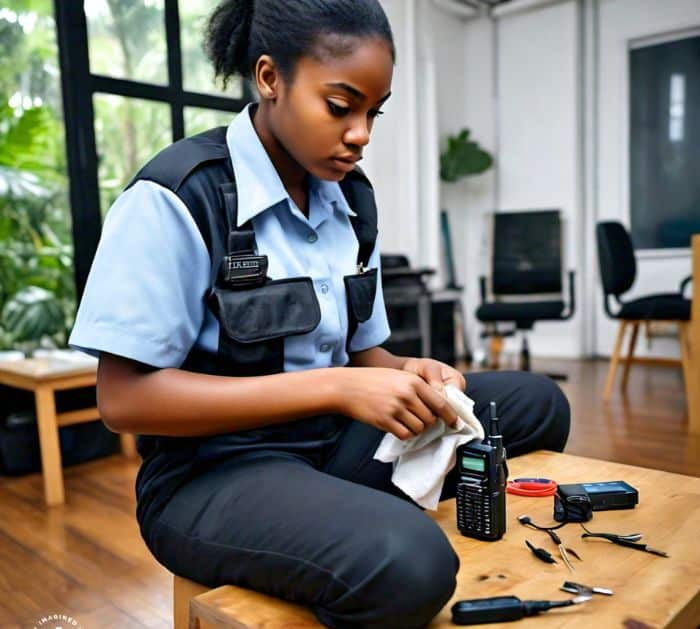Walkie talkies are an essential tool for communication in various industries, such as construction, hospitality, and public safety. However, poor audio quality can hinder effective communication, leading to misunderstandings and errors. In this article, we will explore the importance of good audio quality, common issues that affect walkie talkie audio, and provide a step-by-step guide on how to improve walkie talkie audio quality.
Contents
- 1 Common Issues that Affect Walkie Talkie Audio Quality
- 2 Step 1: Choose the Right Frequency
- 3 Step 2: Upgrade Your Audio Experience
- 4 Step 3: Fine-Tune the Squelch Setting for Crystal-Clear Audio
- 5 Step 4: Boost Your Signal with External Antennas
- 6 Step 5: Keep Your Walkie Talkies in Top Shape
- 7 Conclusion
- 8 FAQs
Common Issues that Affect Walkie Talkie Audio Quality
– Interference from other devices
– Poor frequency selection
– Low-quality headsets or earpieces
– Incorrect squelch setting
– Weak signal strength
– Poor maintenance
– Background noise
– Distance limitations
– Multipath interference
Step 1: Choose the Right Frequency

Selecting the right frequency is critical for good audio quality. Here’s a breakdown of the factors to consider:
Frequency Ranges
- UHF (Ultra High Frequency)
- Range: 400-470 MHz
- Best suited for Urban areas
- UHF frequencies have a shorter wavelength, which helps them penetrate buildings and other obstacles, making them ideal for urban environments.
- VHF (Very High Frequency)
- Range: 136-174 MHz
- Best suited for Rural areas
- VHF frequencies have a longer wavelength, which allows them to travel longer distances and cover more area, making them ideal for rural environments.
Step 2: Upgrade Your Audio Experience
Take your walkie talkie communication to the next level with high-quality headsets or earpieces!
Say Goodbye to Background Noise
Look for headsets with:
- Noise-Cancelling Microphones: Cut through the clutter and make your voice heard loud and clear!
- Good Sound Isolation: Block out distractions and focus on the conversation!
Comfort and Durability Matter
Choose headsets that are:
- Comfortable to Wear: No more sore ears or head fatigue!
- Built to Last: Durable materials and a secure fit for long-lasting use!
Step 3: Fine-Tune the Squelch Setting for Crystal-Clear Audio
Are you tired of hearing unwanted background noise in your audio playback? The squelch setting is here to help! This powerful feature allows you to control the threshold for audio playback, effectively reducing background noise and improving overall audio quality.
How to Adjust the Squelch Setting:
- Experiment with Different Settings: Try out various squelch settings to find the perfect balance for your environment. You may need to adjust it depending on the level of background noise in your space.
- Find the Sweet Spot: As you adjust the squelch setting, listen carefully for the point where background noise fades away, and clear audio takes center stage. This is your optimal setting!
- Hear the Difference: With the squelch setting dialed in, enjoy improved audio quality and reduced background noise. It’s like having your own personal audio engineer at your fingertips!
Tips & Tricks:
- Start with a Medium Setting: Begin with a mid-level squelch setting and adjust from there. This will give you a good baseline to work from.
- Listen Carefully: Pay attention to the audio quality as you adjust the squelch setting. You may need to make small tweaks to get it just right.
- Save Your Setting: Once you’ve found your optimal squelch setting, be sure to save it for future use. This will ensure you always have the best possible audio quality.
Step 4: Boost Your Signal with External Antennas

Take your audio quality to the next level with external antennas! These powerful tools can significantly improve signal strength and reduce interference, resulting in clearer and more reliable audio playback.
How External Antennas Work:
- Amplify Your Signal: External antennas amplify the signal received by your device, allowing you to pick up weaker signals and reduce dropped calls.
- Reduce Interference: By focusing the signal and reducing background noise, external antennas minimize interference and provide a more stable connection.
- Upgrade to High-Gain: For maximum impact, consider upgrading to a high-gain antenna, which can further boost signal strength and quality.
Benefits of External Antennas:
- Improved Audio Quality: Enjoy clearer and more reliable audio playback with reduced background noise and interference.
- Increased Signal Strength: Pick up weaker signals and reduce dropped calls with an amplified signal.
- Reduced Interference: Minimize background noise and provide a more stable connection for uninterrupted audio playback.
Step 5: Keep Your Walkie Talkies in Top Shape

Regular maintenance is key to extending the life of your walkie talkies and ensuring optimal audio quality. By following these simple steps, you’ll keep your devices in top condition and prevent damage.
Maintenance Checklist:
- Clean the Speakers: Regularly wipe down the speakers with a soft cloth to remove dirt and debris.
- Clean the Microphones: Gently clean the microphones with a soft brush or cloth to remove dust and dirt.
- Clean the Antennas: Clean the antennas with a soft cloth to remove dirt and debris.
- Store in a Dry, Protected Area: Keep your walkie talkies away from moisture and extreme temperatures.
- Check Batteries: Regularly check and replace batteries to prevent damage from corrosion.
Tips & Tricks:
- Use a Soft Cloth: Avoid using harsh chemicals or abrasive materials that can damage your walkie talkies.
- Avoid Exposure to Water: Keep your walkie talkies away from water and moisture to prevent damage.
- Store in a Protective Case: Use a protective case or bag to store your walkie talkies when not in use.
- Schedule Regular Maintenance: Set a reminder to perform regular maintenance to keep your walkie talkies in top shape.
Conclusion
Improving walkie talkie audio quality is essential for effective communication in various industries. By choosing the right frequency, using high-quality headsets, adjusting the squelch setting, using external antennas, and regularly maintaining your walkie talkies, you can significantly improve audio quality and ensure clear and effective communication. Remember to consider additional tips and upgrade to digital walkie talkies for maximum audio quality and features.
FAQs
How do you speak clearly on a walkie-talkie?
Speak clearly, slowly, and at a moderate volume, keeping the microphone 2-3 inches from your mouth.
What is the best signal for walkie talkie?
The best signal for a walkie-talkie is a strong, clear signal with minimal interference, typically achieved by using the right frequency (UHF or VHF) for your environment.
What is the strongest channel on a walkie-talkie?
The strongest channel on a walkie-talkie depends on your location and environment, but generally, Channel 1 or Channel 19 are considered the strongest and most widely used channels.
What do you say first on walkie talkie?
When using a walkie-talkie, always start by saying “This is [Your Name or Call Sign]” to identify yourself, followed by the purpose of your call, such as “Calling [Recipient’s Name or Call Sign]”.
